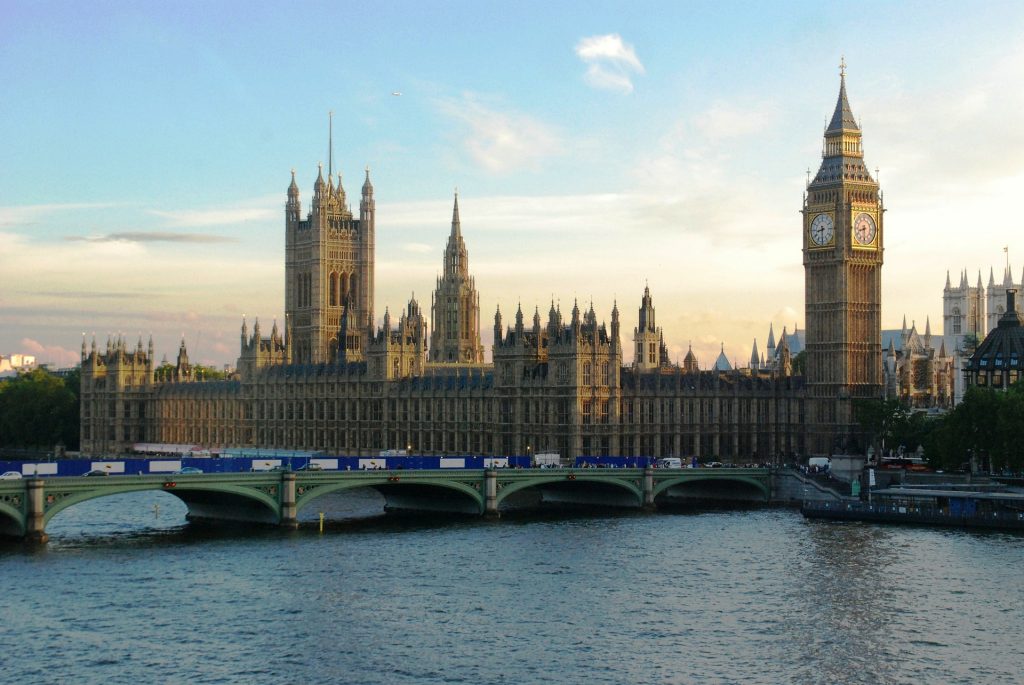
Clear the Lobby: What Laws are MPs voting on this week? W/C 1st November 2021
November 1, 2021
ICO intervenes in nine schools in North Ayrshire which are using facial recognition software to scan faces of pupils in lunch queues
November 8, 2021Article written by Olga Kyriakoudi
Annulment of laws against COVID-19
Back in 2020, under the Public Health Act 1984 (as amended), the Government of the United Kingdom (UK) and Wales were allowed to make laws and regulations in response to the spread of an infectious disease, now known as the COVID-19. And finally this summer, the UK Government revoked those laws as a part of a final stage of lockdown protocol. Following this, masks became optional and establishments across the United Kingdom welcomed people back into their physical spaces. According to Boris Johnson’s statements, another lockdown could take place, but only in the event that NHS is overwhelmed. So, could the Government enact restrictions again under the infamous Plan B?
Increasing cases of COVID-19
In the latest ‘COVID-19 Response: Autumn and Winter Plan 2021′, the Government aimed to repeal the Corona Virus Act 2020 powers to restrict laying down some prohibitions. The power to issue the original lockdown was manifested to the Government by Public Health Act 1984 (PHA) which to this day, has not been changed.
As daily COVID-19 cases reached a concerning number of 45,000 and with a possibility to double, Health Secretary Sajid Javid acknowledged that the Government had to ‘be vigilant’ in the face of a COVID-19 variant that dodges the existing vaccines. Last week, the Government has recorded its highest number of deaths from the coronavirus since last March; health experts have predicted a ‘winter crisis’ and began urging the Government not to just implement ‘Plan B’ —, but to go further with ‘Plan B Plus’.
And while hospitalizations and deaths remain low. but keep on rising at the same time, research suggests several reasons for such occurrence:
- Loosened restrictions and less mask wearing;
- Spending more time indoors without face coverings;
- A moderate number of people who have carried out the vaccination;
- People getting tested positive and not reporting it, resulting in under reports of positive COVID-19 tests results as the Office for National Statistics estimates that the actual number of infections in England is higher than the ones reported. In the week ending on 9 October 2021, the Office for National Statistics appraised that the real number in England was closer to 1 in 60 people.
Another lockdown?
Thus, rather than introduce a lockdown, the Government prefers monitoring hospitalizations, rapid rates of change in figures, and the overall state of the NHS. The pressure on the NHS will be the decisive factor in whether steps from COVID-19 Plan B will be implemented.
Succinctly, the Government has the power to engender another lockdown, but, as the Health Secretary Sajid Javid told BBC Breakfast: ‘No one wants to see another lockdown, I certainly don’t. I don’t think we are going to need to see another lockdown. I think the vaccines are working.’
Hence, for now, the Government is planning to predominantly follow plan A, which entails:
- Offering and encouraging an extensive number of booster jabs to 30 million people;
- Extend a single vaccine shot to healthy 13–15-year-olds;
- Continuing free distribution of PCR and lateral flow tests.
The Government is sticking to some existing legislation and statutory instruments such as the Health and Safety at Work Act 1974, The Health Protection Regulations 2020, The Health Protection Regulations 2021, Public Health (Control of Disease) Act 1984, and the Coronavirus Act 2020 (c.7) which give a variety of powers to the authorities regarding self-isolation, implementation of restrictions, international travel and operator liability, and safety at work.
Our reactions to COVID-19
And while the Government is being cautious with adapting our lives in eliminating the transmission of COVID-19, it is also up to us to adjust our personal and work affairs accordingly. Clyde & Co has proposed an innovative solution to accommodate the needs of their employees regarding COVID-19 safety precautions. ‘We’ve introduced wrist bands, an idea which we have seen other organizations use, as a way of drawing attention to the fact that we shouldn’t assume all our colleagues feel the same about things like shaking hands, mask wearing or social distancing,’ Rob Hill, partner and chair of the firm’s UK board told RollOnFriday. The wristbands come in 3 colours of the traffic lights; red, yellow, and green, each indicating the level of comfort that people have regarding social distancing and physical touch. This idea would not only make the working space more congenial but also limit unnecessary contact that some people agree to out of nicety.
In conclusion, from a legal perspective, the Government possesses all the power that would be needed to order another lockdown, and now some health experts say the public would be willing to accept more restrictions again if they are sold as common sense measures. Hence, the chances of another lockdown may not be high, but the idea of it would always be implicitly implied, until an explicitly post-pandemic time.





